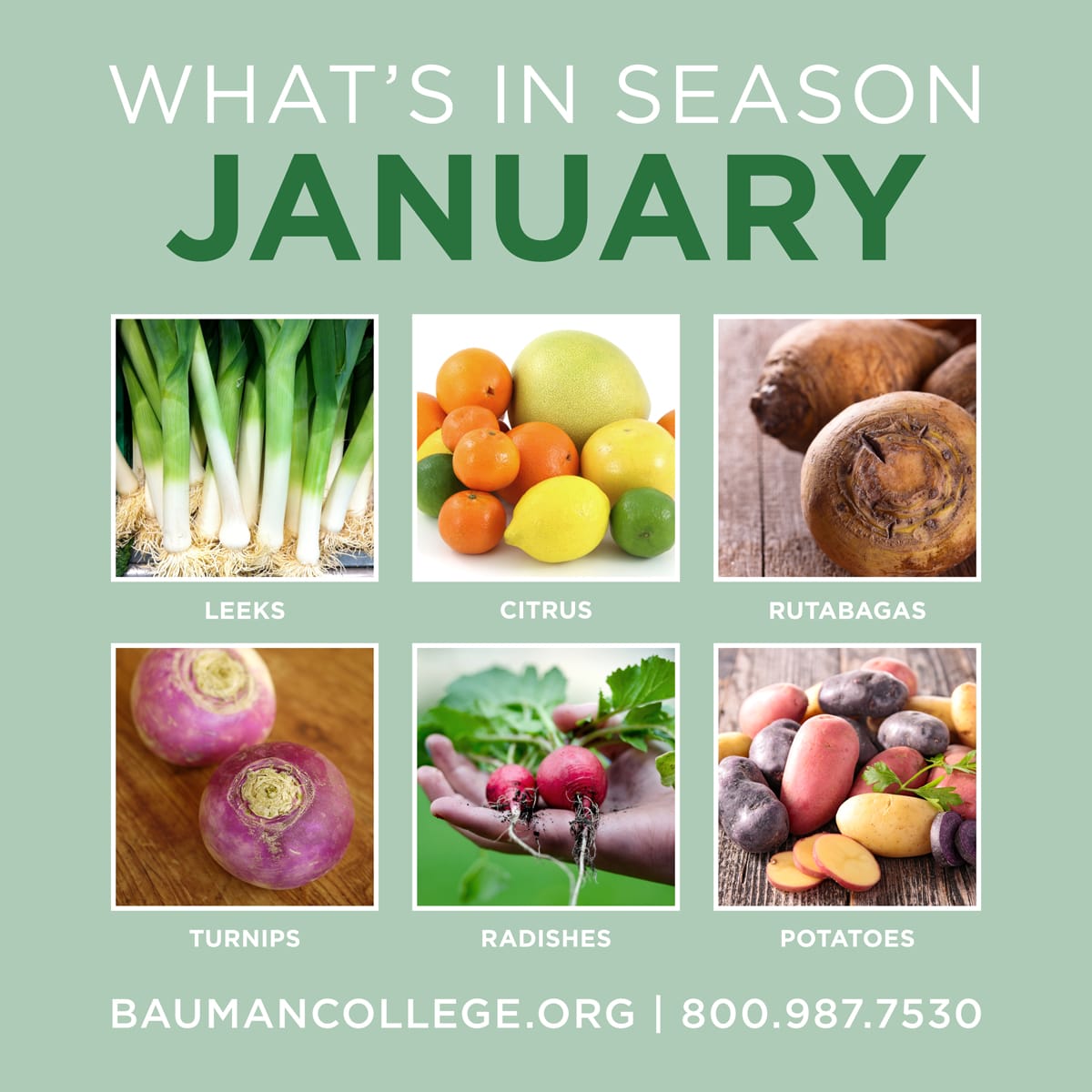Winter brings an abundance of roots and tubers, which are the nutrient storage centers for some plant species in the colder months, and in turn become the source of our nutrients when other foods are scarce (Mueller, 2014). Additionally, many of the foods listed below have cleansing properties, are great for immune support, and can be used as digestive aids—perfect timing for January!

- Citrus Fruits: Mandarins and oranges are still popping up at the supermarket this month. Citrus fruits are high in vitamin C, which supports immunity during the winter months and aids in iron absorption.
- Leeks: While not technically a root vegetable, leeks are part of the onion and garlic family, though they are milder in taste. Like onions and garlic, leeks contain sulfur compounds that are anti-inflammatory and can balance blood sugar. The green tops can be cut off and used for stock. The white and light green bottoms can be sautéed or used in soups. Be sure to clean the white leaves thoroughly as dirt can get trapped in between them.
- Potatoes: A good source of complex carbohydrates and vitamin C, potatoes neutralize acids and have antibiotic properties. Be sure to buy organic varieties, as commercial potatoes have one of the fourth highest pesticide residues in the country.
- Turnips: These tubers can be used as digestive aids, to clear mucus, and are good for general detoxification. They are high in anticarcinogenic nutrients, vitamins B and C, potassium, phosphorous, and calcium. Be sure not to overcook them as they will smell like sulfur.
- Rutabagas: A horticultural cross between a turnip and a cabbage and popular in Scandinavian cuisine, rutabagas strengthen digestion and detoxify the liver. Their nutrition value is comparable to a turnip, but unlike turnips, they contain vitamin A, which supports the immune system.
- Radishes: Another member of the cabbage family, radishes help remove toxins, stimulate the appetite, and aid in digestion. They have antifungal and antibacterial properties, and are high in folic acid, potassium, vitamin B6, riboflavin, magnesium, copper, and calcium. Cooking softens the tanginess of a raw radish.
RESOURCES
Bilow, R. (2015, January 23). What’s in season in january: citrus, kale, leeks, and more. Bon Appetit. Retrieved on 12/15/2016 from http://www.bonappetit.com/test-kitchen/ingredients/slideshow/in-season-now-january
Mueller, J. (2014, January 21). A guide to root vegetables. Oh My Veggies. Retrieved on 12/16/2016 from http://ohmyveggies.com/a-guide-to-root-vegetables
Wood, R. T. (2010). The new whole foods encyclopedia: a comprehensive resource for healthy eating. (pp. 196, 285-286, 294, 307, 367). New York, NY: Penguin Books.